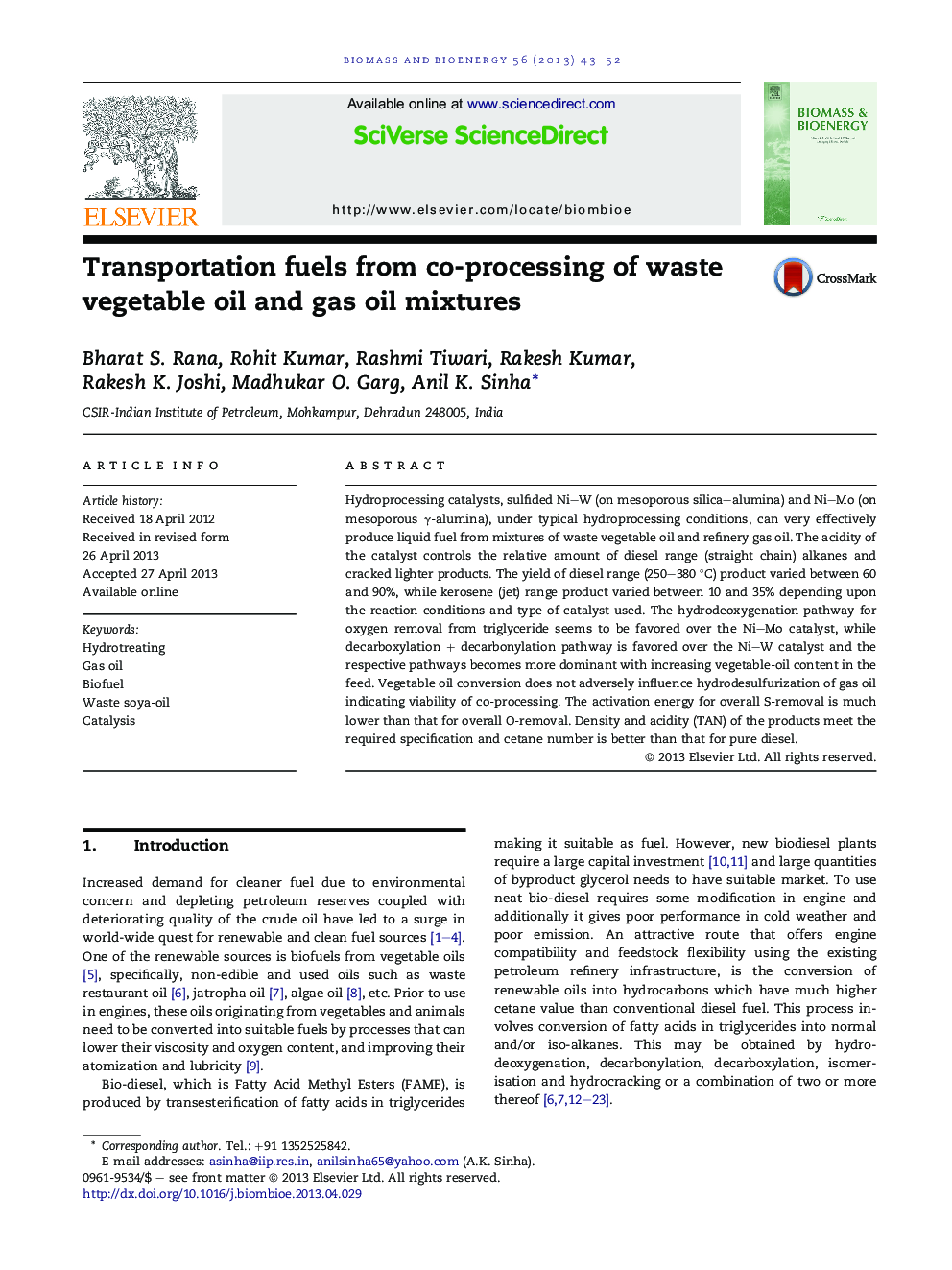| Article ID | Journal | Published Year | Pages | File Type |
|---|---|---|---|---|
| 7065046 | Biomass and Bioenergy | 2013 | 10 Pages |
Abstract
Hydroprocessing catalysts, sulfided Ni-W (on mesoporous silica-alumina) and Ni-Mo (on mesoporous γ-alumina), under typical hydroprocessing conditions, can very effectively produce liquid fuel from mixtures of waste vegetable oil and refinery gas oil. The acidity of the catalyst controls the relative amount of diesel range (straight chain) alkanes and cracked lighter products. The yield of diesel range (250-380 °C) product varied between 60 and 90%, while kerosene (jet) range product varied between 10 and 35% depending upon the reaction conditions and type of catalyst used. The hydrodeoxygenation pathway for oxygen removal from triglyceride seems to be favored over the Ni-Mo catalyst, while decarboxylation + decarbonylation pathway is favored over the Ni-W catalyst and the respective pathways becomes more dominant with increasing vegetable-oil content in the feed. Vegetable oil conversion does not adversely influence hydrodesulfurization of gas oil indicating viability of co-processing. The activation energy for overall S-removal is much lower than that for overall O-removal. Density and acidity (TAN) of the products meet the required specification and cetane number is better than that for pure diesel.
Keywords
Related Topics
Physical Sciences and Engineering
Chemical Engineering
Process Chemistry and Technology
Authors
Bharat S. Rana, Rohit Kumar, Rashmi Tiwari, Rakesh Kumar, Rakesh K. Joshi, Madhukar O. Garg, Anil K. Sinha,
